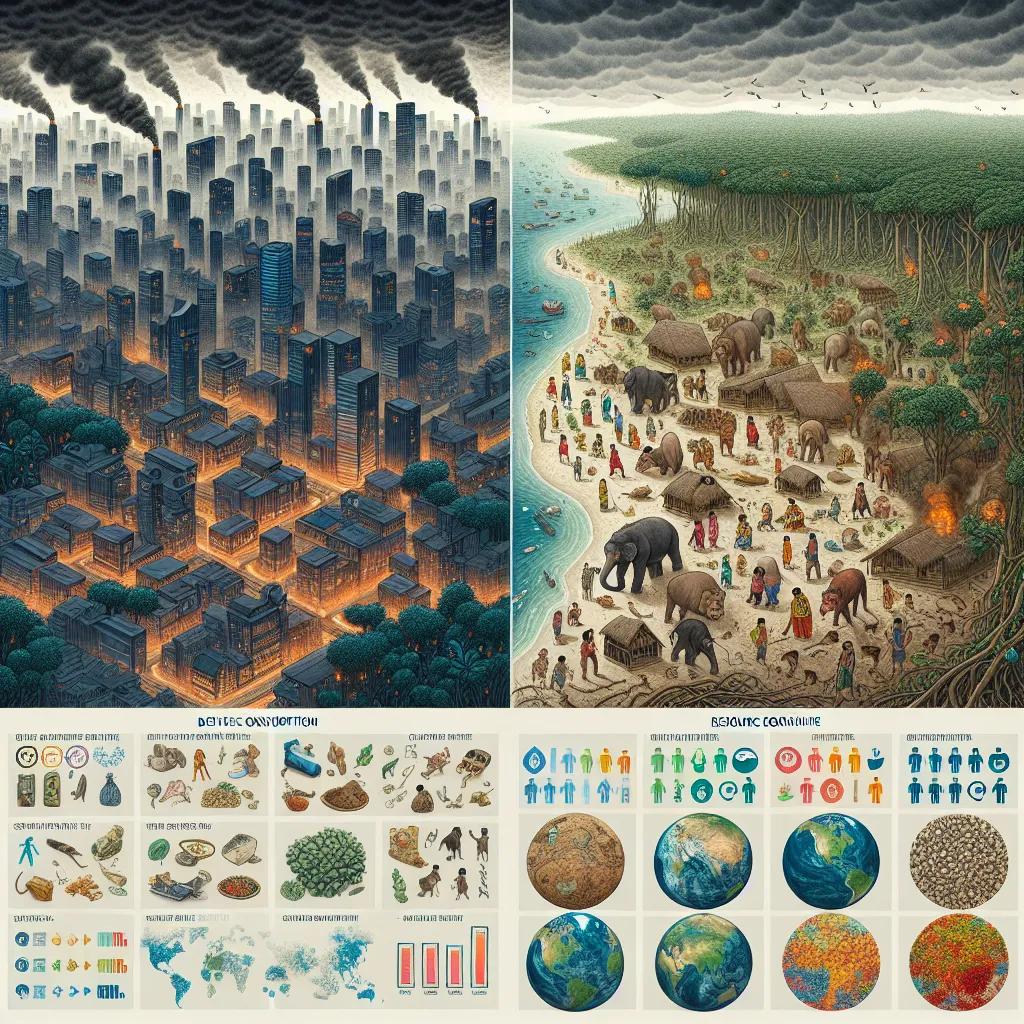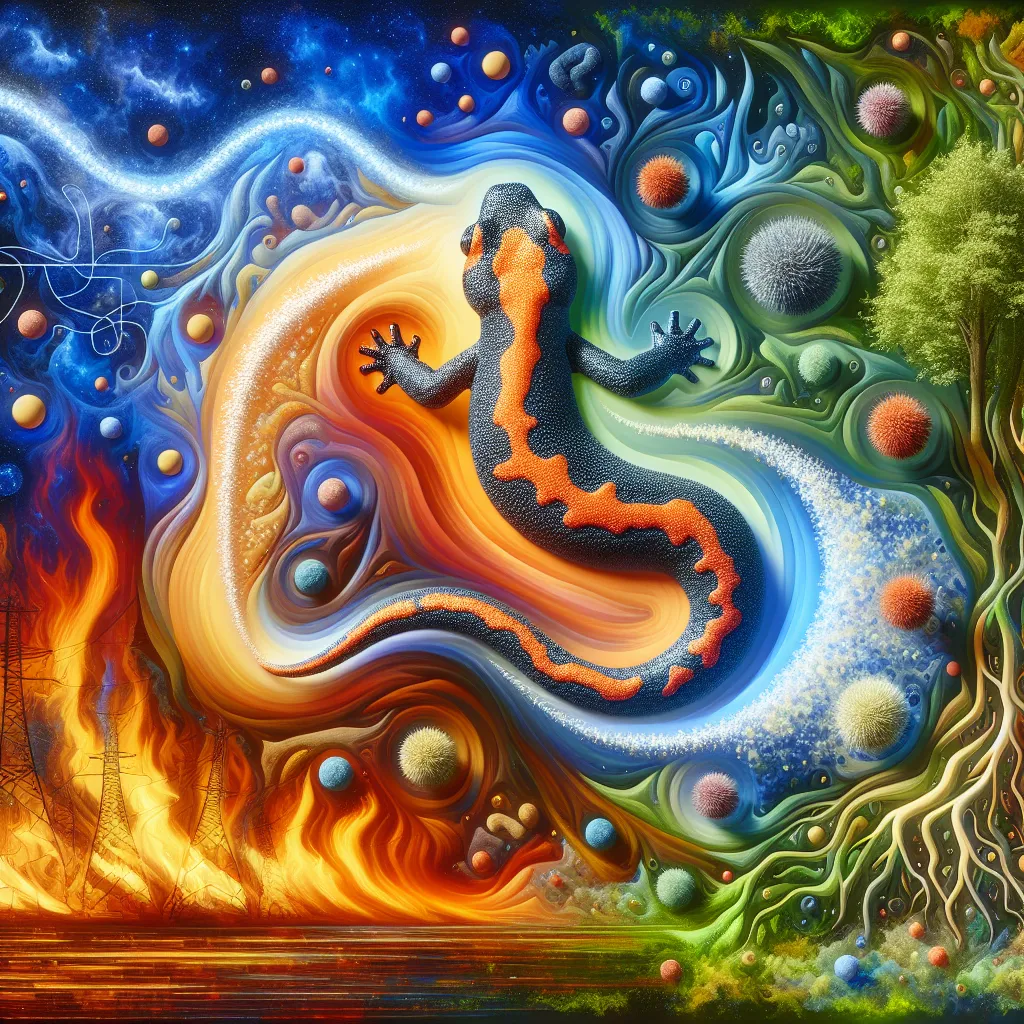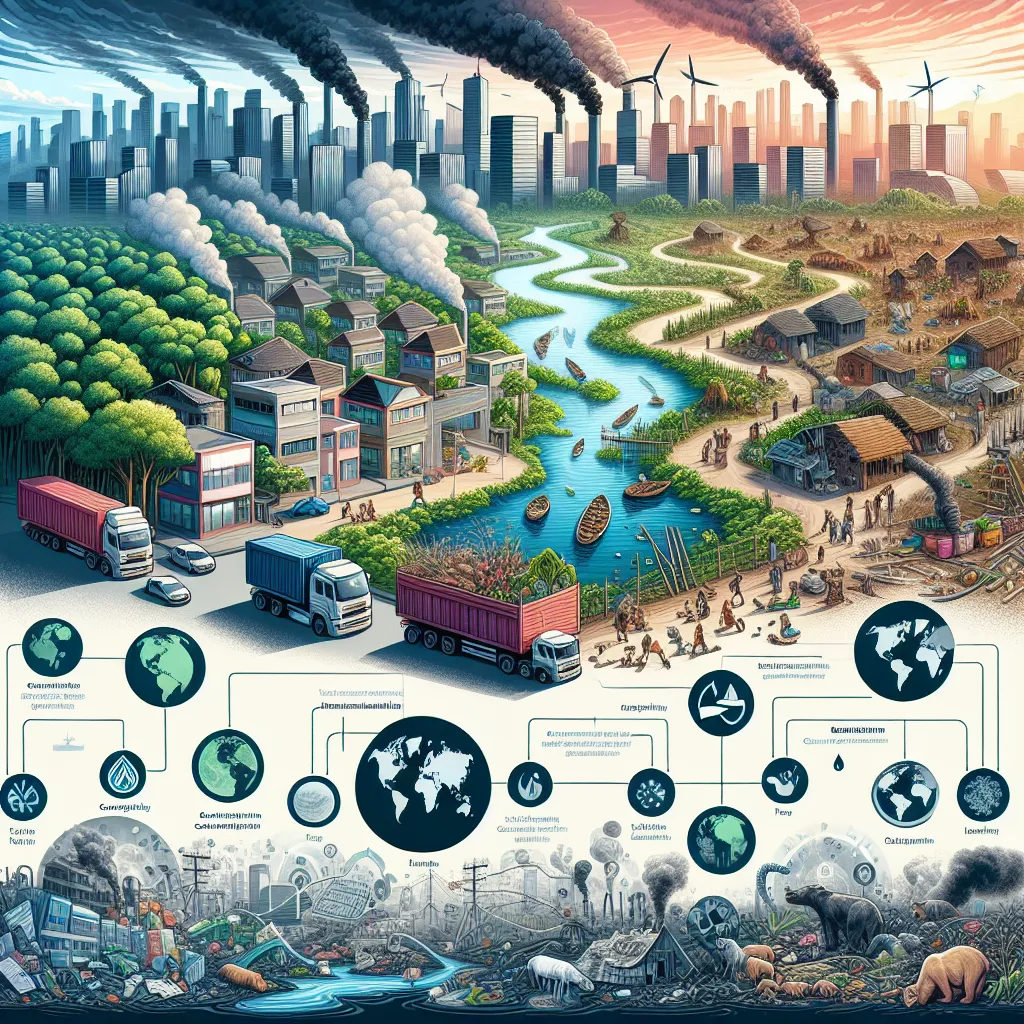Ask AI on The Internet
Question: What effect does overpopulation have on the environment? Why does a higher-income country have more of an impact on the environment than a low-income country? How does deforestation affect the people living in an environment? List all of the Earth’s natural resources someone would consume in one day. Give one example of how two different ecosystems affect each other.
### Effects of Overpopulation on the Environment: 1. **Resource Depletion**: Overpopulation leads to excessive consumption of natural resources, such as fresh water, fossil fuels, minerals, and timber, faster than they can be replenished. 2. **Pollution**: Increased waste production and pollution, including air, water, and soil pollution, result from urbanization, industrial activities, and vehicular emissions. 3. **Loss of Biodiversity**: Habitat destruction and encroachment lead to a decline in wildlife populations and biodiversity. Deforestation, urban sprawl, and agricultural expansion contribute significantly to this issue. 4. **Climate Change**: Higher greenhouse gas emissions from increased energy consumption and deforestation exacerbate global warming and climate change. 5. **Land Degradation**: Overuse of land for agriculture and urban development can lead to soil erosion, desertification, and loss of arable land, affecting food security. ### Higher Impact of Higher-Income Countries on the Environment: 1. **Higher Consumption Rates**: Higher-income countries typically have higher standards of living, which translate to higher per capita consumption of energy, water, and other resources. 2. **Industrial Activities**: Developed nations often have more extensive industrial bases, leading to increased greenhouse gas emissions, waste production, and environmental pollution. 3. **Transportation**: Increased reliance on personal vehicles and air travel in high-income countries results in higher carbon footprints from transportation. 4. **Waste Generation**: Higher-income countries produce more waste per capita, including electronic waste, plastic, and other non-biodegradable materials. 5. **Energy Use**: High-income countries tend to consume more energy per capita, often relying on fossil fuels, which contribute to air pollution and climate change. ### Effects of Deforestation on People Living in an Environment: 1. **Loss of Livelihoods**: Communities that depend on forests for their livelihoods, such as for food, fuel wood, and construction materials, can suffer economically. 2. **Displacement**: Indigenous and local communities may be displaced when forests are cleared for agricultural or industrial projects. 3. **Loss of Ecosystem Services**: Forests provide critical ecosystem services, such as water purification, flood control, and carbon sequestration. Their loss can lead to a decline in these services, impacting water quality and increasing the risk of natural disasters. 4. **Health Impacts**: Deforestation can lead to the spread of diseases as the natural barriers between humans and wildlife are disrupted, and it can also result in poorer air quality. 5. **Cultural Impacts**: Many indigenous and local communities have cultural and spiritual ties to forests, and deforestation can lead to the loss of cultural heritage and identity. ### Natural Resources Consumed in One Day: 1. **Water**: For drinking, cooking, bathing, and cleaning. 2. **Food**: Agricultural products such as grains, fruits, vegetables, meat, dairy, and seafood. 3. **Energy**: Electricity and fuel for heating, cooking, lighting, and transportation. 4. **Air**: Oxygen for respiration. 5. **Timber and Paper**: For construction, furniture, and paper products. 6. **Minerals**: Small amounts of minerals used in electronics and other daily-use items. 7. **Clothing and Textiles**: Materials such as cotton, wool, and synthetic fibers. 8. **Plastics**: Used in packaging, household items, and various consumer products. ### Example of How Two Different Ecosystems Affect Each Other: **Example**: The interaction between a **forest ecosystem** and a **freshwater river ecosystem**. - **Forests** can help maintain the health of nearby rivers by stabilizing soil and reducing erosion. The roots of trees and plants hold the soil in place, preventing sediment from washing into the river, which helps maintain water quality and clarity. - **Rivers** can, in turn, support forest ecosystems by providing a reliable source of water. This water is crucial for the growth and survival of plants and trees within the forest. - **Nutrient Cycling**: The leaves and organic matter that fall from the forest into the river provide nutrients that support aquatic life, while the river can distribute these nutrients downstream, benefiting broader ecosystems. - **Biodiversity**: The interaction between these ecosystems can create unique habitats that support a diverse range of species, contributing to overall biodiversity. These examples illustrate the interconnectedness of different ecosystems and the importance of maintaining ecological balance.
Think your answer is better than the AI's? Post it below.
Other Most Relevant Posts:
 1. **The Strain of Overpopulation on Earth's Resources**
2. **High-Income Countries: Understanding Environmental Impact**
3. **Deforestation's Human Cost on Lives and Livelihoods**
4. **D
1. **The Strain of Overpopulation on Earth's Resources**
2. **High-Income Countries: Understanding Environmental Impact**
3. **Deforestation's Human Cost on Lives and Livelihoods**
4. **D
 **Question 13:** Human Activity and San Marcos Salamanders Survival
**Question 14:** Bactericide Impact on Nitrogen Cycle
**Question 16:** Wildfire Effect on Carbon Dioxide Removal
**Question 13:** Human Activity and San Marcos Salamanders Survival
**Question 14:** Bactericide Impact on Nitrogen Cycle
**Question 16:** Wildfire Effect on Carbon Dioxide Removal
Question Tags
If you want your question answered by an AI, click here.





Post your own comment: